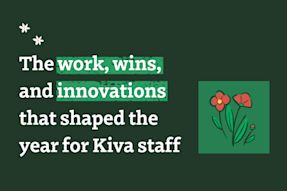Today, technology facilitates all manners of processes, reducing once lengthy and arduous operations to a matter of mere seconds. Kiva lenders know this to be true — with the click of a button, they can help fund the dream of a farmer in Uganda, an artisan in Tajikistan or a refugee entrepreneur in Colombia. As easy and enjoyable as Kiva has made the lending process, it is worth noting that there’s a great deal of work that goes into delivering that loan into a borrower’s hands.
One of our Nicaraguan field partners, La Asociación Pueblos en Acción Comunitaria (PAC), exemplifies the efforts required to disburse Kiva loans on the ground. PAC is an agricultural cooperative in Nicaragua that works to promote sustainable rural development in the coffee- and cacao-producing regions of Nicaragua by training farmers in responsible agriculture and facilitating their access to fair markets.
.
Since 2014, PAC has helped farmers control pests and diseases, properly apply agricultural inputs and determine the correct maturation at which to harvest coffee plants. In this time, PAC has also held trainings on topics such as working conditions, child labor, preparation of biofertilizers, the planting of seedbeds and nurseries, and other environmentally friendly agricultural practices.
PAC has disbursed 1,745 loans, coming to a total of $2,619,589 USD. Many of these loans were funded by the generosity of lenders on Kiva.org. The main obstacle faced in getting loans to PAC’s destination is that it often requires journeying to isolated corners of rural Nicaragua, where many borrowers lack access to cell signal or internet.
While visiting Kiva borrowers during my site visit, I had the opportunity to undertake several such journeys myself. One borrower I visited is a coffee farmer named Don Favio who lives high up in the mountains of Jalapa. The bumpy dirt roads accommodated PAC’s truck as far as they could, but on one particularly steep hill, the sounds of spinning tires and loose stones flying indicated the end of the driving portion of our trip. I slid into rubber boots and we took off on foot.
We trekked through thick heat and on steep and winding jungle paths. As we progressed, the possibility that Don Favio would not be home crossed my mind more than once. Traveling long distances only to be unable to locate a borrower is not uncommon for PAC’s loan officers. This is in part due to the limited ability to communicate and arrange meetings in advance with remote farmers. Fortunately, on this day we avoided a missed connection. We were met with warm welcomes, freshly grown bananas and sweeping views of rows of coffee plants and the mountains beyond them. Don Favio and I sat down to discuss his life, his work, and the impact PAC’s loan had achieved.
.
For PAC’s staff, long and difficult journeys are part of the process for vetting potential clients, alerting current borrowers to regional meetings and trainings, following up with struggling borrowers and more. On top of their main responsibilities, PAC faces other challenges in managing its credit portfolio in a country roiled by recent social and political unrest.
Nicaragua continues to suffer the repercussions of the No Pago (“I Won’t Pay”) movement - during which tens of thousands of smallholder farmers, with the backing of the government, ceased repaying their loans to microfinance institutions. More recently, protests against social security reform in April 2018 and onwards led to violent government repression and a major socio-political crisis.
For more context on how Kiva has responded to these challenges, check out this article from June 2019 on Kiva’s blog.
PAC meets with each borrower who has slipped into delinquency due to participation in No Pago, a poor crop yield, or any other reason to understand the cause of the problem and devise an action plan for resolving it. Wherever there is hope that the borrower is willing to work to get back on track, PAC will restructure the original loan agreement, adjusting the repayment schedule and other loan conditions to ensure the borrower’s ability to comply. These visits imply not just conversations that may prove challenging, but also the taxing journey to get to and fro.
I’ve experienced firsthand PAC’s commitment to reaching borrowers in even the most far-flung and secluded corners of Nicaragua. However, they couldn’t do this applaudable work without the help of Kiva lenders!
Find and fund PAC’s other loans here.
PREVIOUS ARTICLE
Small U.S. business owners and borrowers backed by Kiva tell their stories →NEXT ARTICLE
A devoted father and farmer, Michael dreams of a bright future for his children →














